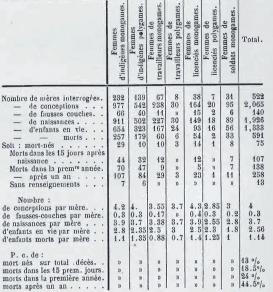This project examined the role of medical doctors in the production and circulation of demographic knowledge and ideas about human variation in three contiguous Central African colonies: the Belgian Congo, Portuguese Angola, and French Equatorial Africa.
African Health Care and Medical Demography: After the First World War, colonial governments in Central Africa established increasingly comprehensive health programs to combat sleeping sickness and other endemic diseases and to improve the general health of the African populations under their rule. This investment in African health was chiefly a response to rampant fears of depopulation that ran counter to the colonial ideology of mise en valeur, which linked economic exploitation to human development. Demographic studies quickly became an integral part of these health programs. Influenced by contemporary ideas of social medicine, leading doctors viewed demographic data as indispensable for designing adequate programs of collective health, and for monitoring their impact. Following this rationale, medical doctors were turned into field demographers and produced a range of elaborate studies on population dynamics in Central Africa, which remained unequalled until the professionalization of colonial demography after the Second World War.
From Measuring Men to Measuring Reproduction: One of the aims of this project was to analyze the research questions and methods that guided these demographic studies and to contrast them with other demographic endeavors. Territorial administrators had mainly been interested in the number of able-bodied men for labor recruitment and tax collection, a rationale that probably led them to underestimate the number of women and children; medical doctors, by contrast, wanted an integral and dynamic view on the population. While they continued to calculate mortality statistics, they were increasingly interested in establishing indices that would shed light on the reproductive side of population dynamics, such as sex ratios, age pyramids, and fertility and infant mortality rates. Accordingly, their methods did not only include registration techniques and periodical censuses, but also oral interviews with African women. Nevertheless, data produced by doctors were often still far from accurate, partly because of Africans’ strategies of avoidance and resistance.
Demographic Data and Human Variation: The second major aim was to explore how these demographic studies interacted with ideas about human biological variation. How did doctors and other colonial officials interpret their data, for example geographically patterned differences in fertility or in sex ratio? To what extent did they entrench, refute, or rather reshape pre-existing notions of ethnicity and race, which had been based on linguistic and somatic features, anthropometric measurements, and civilizational status?
The Colonial Management of Demographic Variation: Finally, this project assessed the practical implications of demographic variation for colonial policy. Did differences in demographic indices indeed lead to geographically or ethnically based adaptations of African health care programs? And how did such variations affect other colonial interventions, such as policies of labor recruitment and taxation or projects of agricultural reform?
From its research design, the analysis of three contiguous colonies ruled by different European powers served to highlight differences and similarities, but also processes of inter-imperial borrowing, thus contributing to the fields of comparative and transnational history.

